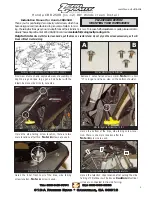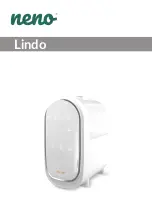
S c h w e i S S e n
w e l d i n g
w e l d i n g
S o l d a d u r a
S c h w e i S S e n
18
E s g i b t e i n e Vi e l z a h l v e r s c h i e d e n e r
Robotertypen und verschiedene Roboterher-
steller. Aus Platzgründen wird die Montage
anhand eines fiktiven Roboters dargestellt,
da sich die Arbeitsschritte nicht wesentlich
unterscheiden. Für Besonderheiten einiger
Robotertypen schauen Sie bitte in den Anhän-
gen nach.
Die Details der verschiedenen Systemva-
rianten, wie z.B. Kompaktsteckerausführung,
Länge der Versorgungsleitung, Pistolenko-
pfbestückung, Ersatz- und Verschleißteile,
entnehmen Sie bitte den jeweiligen aktuellen
Ersatz- und Verschleißteile-Listen.
Unterschiedliche Schweißaufgaben, die in der
Praxis auftreten, werden durch verschiedene
Ausführungen des Pistolenkopfes mit beson-
deren Gasdüsen, Kontaktspitzen und Sockeln
abgedeckt.
So kommt beim Zwangslagenschweißen mit
niedrigen Stromstärken (Kurzlichtbogen) im
Regelfall eine Gasdüse mit einem kleinen
Innendurchmesser und einem langen Kontakts-
pitzensockel zum Einsatz.
Schweißarbeiten mit hoher Leistung (Sprühli-
chtbogen) sollten hingegen generell mit einem
kurzen Sockel und einer Gasdüse mit einem
großen Innendurchmesser ausgeführt werden.
Zum Aluminiumschweißen sind im Drahtvors-
chubsystem Antriebsrollen mit speziell gefor-
mten Nuten einzusetzen.
Für den Einsatz von Drahtelektroden aus
Aluminium und Chrom-Nickel wird ein Draht-
führungskapillare empfohlen, anstatt einer
Drahtführungsspirale.
Drehmedium mit integrierter Drahtbremse
Ein Drehmedium mit integrierter Drahtbremse
ist ideal für alle einschlägigen Anwendungen
als Abtastsensor. Die Drahtbremse garantiert
eine sichere Berechnung der Schweißnahtlage.
Durch frei programmierbare Bremszyklen hält
die Drahtbremse den Draht immer exakt in
der gleichen Position. Der TCP wird bei dem
gesamten Messprozess gehalten.
Die Drahtbremse garantiert einen absolut kons-
tanten Stickout, auch bei unterschiedlichen
Drahtdurchmessern.
4. Anwendungshinweise
4.
Instructions for use
4.
Instrucciones de uso
There are many different robot types and
numerous robot manufacturers. Due to space
limitations the assembly of a fictitious robot
is shown, since the work steps do not differ
significantly. Please refer to the appendices for
special features of some robot types.
Please review the lists below for current details
on the particular variations for your system,
for example: compact-plug design, supply-line
length, torch-head assembly, spare parts and
wearing parts.
Various welding applications required in prac-
tice are covered by different designs of pistol
head including special gas nozzles, contact tips
and tip adapters.
For welding with low voltages (short arc weld-
ing) in constrained positions, a gas nozzle with
a small inner diameter and a long contact-tip
adapter should be used.
However, any welding operations at high power
(spray arc) should be performed with a gas
nozzle of a large inner diameter and a short
tip adapter.
For aluminum welding, you must use drive roll-
ers with specially formed grooves in the wire
feed system.
We recommend the use of a capillary liner
with wire electrodes made of aluminium and
chromium-nickel.
We do not recommend the use of a liner for
this purpose.
Rotary interfaces with integrated wire brake
Rotary interfaces with integrated wire brake are
perfect for using as a sensor. The wire brake
assures a secure calculation of the position of
the welding line.
The wire brake is freely programmable and
keeps the wire in the same position exactly. The
TCP will be maintained throughout the whole
measurement process.
The wire brake assures a constant stickout
even with different wire diameters.
Existe una gran variedad de tipos de robot y de
fabricantes de sistemas de robot. Por motivos
de espacio, el montaje se representa con un
robot ficticio, ya que los pasos de trabajo son
prácticamente iguales. Para ver detalles espe-
ciales de algunos tipos de robot, consulte por
favor los anexos.
Los detalles de los diferentes variantes de
sistema, como por ejemplo el modelo del
enchufe compacto, la longitud del cable de
alimentación, el equipamiento del cabezal
de la pistola, las piezas de reemplazo y de
desgaste, los puede tomar de las correspon-
dientes listas actuales de piezas de reemplazo
y de desgaste.
Las distintas tareas de soldadura que surgen
en la práctica se llevan a cabo mediante
diferentes modelos del cabezal de pistola con
toberas de gas, puntas de contacto y zócalos
especiales.
Así, en caso de que se tenga que realizar
una tarea de soldadura con una baja inten-
sidad de corriente (arco voltaico corto), se
utiliza normalmente una tobera de gas con un
diámetro interno menor y un zócalo de punto
de contacto largo.
En cambio, los trabajos de soldadura de alto
rendimiento (arco voltaico de chispas) gene-
ralmente deben ejecutarse con un zócalo y
una tobera de gas con diámetro interno mayor.
Para soldar aluminio se deben emplear rodillos
de accionamiento con ranuras especialmente
moldeadas en el sistema de alimentación del
cable. Si se utilizan electrodos de cable de
aluminio y cromo-níquel, se recomienda un
capilar de guía de hilo, en vez de una espiral
de guía de hilo.
Interfaz de giro con freno del hilo integrado
Una interfaz de giro con freno del hilo integrado
es ideal para aplicaciones con sensor.
El freno del hilo garantiza un cálculo fiable de
la localización del cordón de soldadura.
El freno del hilo integrado mantiene, por medio
de ciclos de frenado programables, el hilo
siempre en la misma posición exacta. El TCP
se mantiene estable durante todo el proceso
de medida.
El freno del hilo integrado garantiza un Stickout
totalmente constante, incluso con diferentes
diámetros del hilo.
:
:
















































